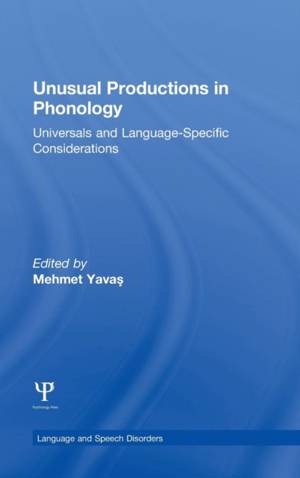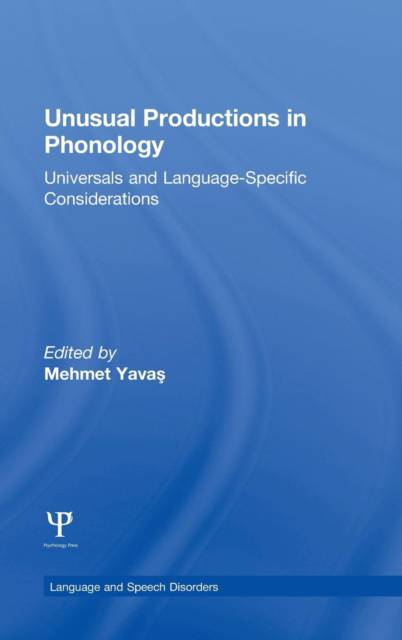
- Retrait gratuit dans votre magasin Club
- 7.000.000 titres dans notre catalogue
- Payer en toute sécurité
- Toujours un magasin près de chez vous
- Retrait gratuit dans votre magasin Club
- 7.000.0000 titres dans notre catalogue
- Payer en toute sécurité
- Toujours un magasin près de chez vous
Unusual Productions in Phonology
Universals and Language-Specific Considerations
Description
The universalist view that acquisition of phonology is guided by universal principles has been the dominant position for decades. More recently, an alternative view has brought into focus the relationship between developmental markedness and language-specific input frequencies. With entirely original chapters on non-ambient-like productions by typically and atypically developing children, and second language learners, Unusual Productions in Phonology delves deeply into these competing explanations to show that patterns observed do not uniquely lend themselves to one or the other explanations. Rather, they point towards the need for both universal markedness and statistical input considerations in any attempted explanation.
Containing contributions from leading researchers from around the world, this impressive collection is a must-have resource for any researcher, practitioner, or advanced student specializing in phonology, cognitive psychology, applied linguistics, and communication disorders.
Spécifications
Parties prenantes
- Editeur:
Contenu
- Nombre de pages :
- 278
- Langue:
- Anglais
- Collection :
Caractéristiques
- EAN:
- 9781848726703
- Date de parution :
- 12-11-14
- Format:
- Livre relié
- Format numérique:
- Genaaid
- Dimensions :
- 157 mm x 229 mm
- Poids :
- 476 g

Les avis
Nous publions uniquement les avis qui respectent les conditions requises. Consultez nos conditions pour les avis.





